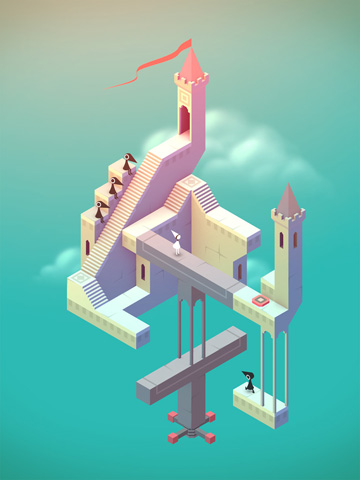We talk a fair amount on this blog about the importance of playing other people’s games, whether it’s to get a sense of the competition, to think about how games make you feel, or to see how inappropriate games can inspire kid-appropriate adaptations. Recently, I’ve been thinking about what different games that I love have in common, beyond the obvious similarities of genre or target age group.
Everyone who plays games and loves them does so in their own personal way and for their own reasons. Some people love puzzlers, some love games that are impossibly hard (Flappy Bird, anyone?), some love online games where they can connect with a big community, and others prefer to play small scale games that can be completed in short periods of time. (I’m a sucker for puzzle games, interactive fiction, and games I can play on my subway commute, for starters.) As developers and designers, we tend to make things that speak to those affections.
I’ve done a quick survey of the apps I’m finding compelling right now, with an eye to how their approach might inform people trying to create games in a similar vein, or who simply find their core qualities resonant. So, depending on what speaks to you, here are some inspirations from the app store you should think about downloading right now.
If you love things that are beautiful:

I finally downloaded this puzzle game after having had it recommended to me by tons of friends from many different backgrounds, and it’s easy to see why so many people have fallen in love with it. This M.C. Escher-esque experience is not only full of compelling and interesting puzzles that progress in difficulty, but it also reminded me of how much looks really can matter in games, whether for kids or adults. This game is not just good and interesting, it’s eye-popping, lushly, enticingly beautiful. It’s easy to forget how important aesthetics can be, but when a game like this draws the player in with its sheer gorgeousness, it reminds us how powerful it is, whatever your age, to experience a world that you want to get lost in.
If you love nerdy, awesome science:

This is not a game exactly, more an exploratory tool from new app company Tinybop. It essentially gives the user access to a working model of the human body. Like Monument Valley, it’s beautiful to look at, but more than that, it really respects the notion that the science of the human body is inherently interesting – and makes a great case for that. There are no obvious bells and whistles, no “gamification” of the body, just a simple cross-section of a couple of different human beings to explore and marvel at. The fanciest things get are features like the one where you can make the human figure jog and see the heart beat faster in response. It’s lovely to encounter this simple respect for and fascination with the amazing ways our bodies work, and the faith the creators have that kids will find it equally interesting (if my kids are any indication, their assumptions are right on target).
If you love a great story:

We knew when we dedicated a whole blog post to Beat Sneak Bandit a couple of years back that the people at Simogo knew what they were doing. And we did, I’m happy to see, call out their development of story and character as one of the elements that made that game so successful, even though that game was a fairly traditional stage-by-stage game complete with chapters and boss battles. But I certainly wouldn’t have guessed that their next effort would be a crazily compelling near-novella with embedded puzzles that plays with the conventions of literature more than the traditional mechanics of a level-designed game.
I’m a sucker for stories in games, and the tension between letting gameplay or story take the lead is one I’ve written about here before. Device 6 reminds me all over again why the tension between game and story is one I find so interesting, and one I spend so much of my time grappling with.
If you love an addictive puzzler:

Sometimes, you just want to lose yourself in an addictive, fun, and straightforward experience that epitomizes its tag line, “A tiny puzzle that grows on you.” Threes is a clever, deceptively simple math puzzler that is true to its name – essentially, you’re just adding blocks of threes together and seeing how high you can go. It’s weirdly adorable, very straightforward, and yet maddening, as each game finishes with that crazy-making feeling that if you just play one more time you can achieve a higher score.
Playing Threes is a reminder for narratively-minded people like me that all games don’t have to be built on complex nuanced stories, and that mathematical concepts can be equally compelling and motivating if they’re applied in a great design. It’s all about how the simple tasks engage you and push you to keep trying to do better.
So that’s my short list of games you should be playing now, whatever your areas of interest. Each of these shares some key qualities – intuitive design, beautiful artwork, lack of instructions (interesting, eh?), and, clearly, a high degree of quality and polish.
What games are you excited about right now? Let us know at KidsGotGame@NoCrusts.com, follow us @NoCrusts on Twitter, or sign-up to receive email updates.

























